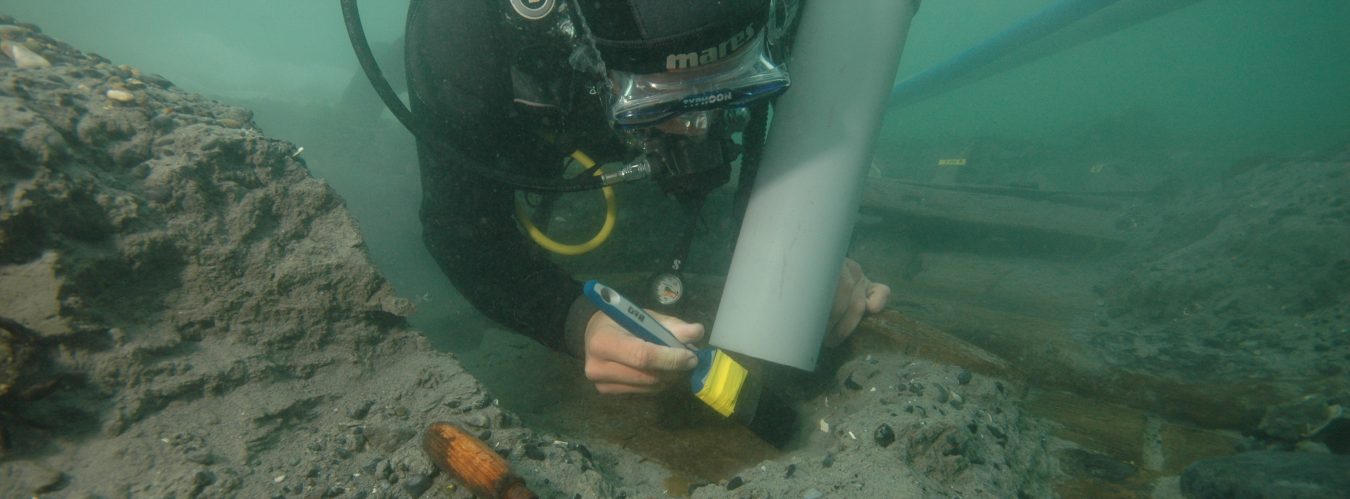We are very happy to announce a fully funded PhD studentship for UK/EU students as part of the Marine and Maritime Futures Leverhulme Trust Doctoral Scholarship scheme at the University of Southampton. If you have an excellent academic track record, are looking for a stimulating and challenging transdisciplinary project in a world class research environment please read on for further details on how to apply …
Project Title: Mapping potential wreck sites with seafloor data – scientific, social and legal considerations
Supervisors: Dr Fraser Sturt, Dr Justin Dix and Prof Michael Tsimplis
Rationale:
Thousands of potentially polluting WWII shipwrecks litter the ocean floor. The pollutants carried on board may include oil, ammunition or other toxic materials. Leakage of pollutants from such wrecks may take place continuously or catastrophically, and the risk of such an event increases with time. The location of several of these wrecks is known and monitored by national administrations, but by far the majority sank without exact information on their location. The UK Ministry of Defence is presently undertaking a project trying to identify the location of such WW II wrecks, on the basis of historic information. In addition, hindcasts of oceanic circulation and storm surges extending before WWII can be used to enhance our understanding of the nature of the wrecking. Finally, there are now multiple publically available (UKHO, CCO, MCA) and commercial sources of swath bathymetry from the UK shelf, against which this archive derived wreck record can be compared. In many cases the decimetre resolution of the swath data will also facilitate full mapping of the identified sites.
This PhD will combine historical records with the prevailing weather and oceanographic conditions at the time of sinking in order to define areas where the wrecks may be. These zones will be cross- referenced against the extant swath bathymetry targets to facilitate an assessment of the environmental risk present in the various areas of the UK Continental Shelf. Key to this project is the co-consideration of legal responsibilities for identifying and locating such wrecks and ensure they are not polluting the seas. Issues to explore include: Where the wrecks were at the time of sinking beyond jurisdiction of the state but now rest within the UK shelf or EEZ does responsibility rest with the UK; Do the flag state of ships have responsibility under international law?
Methodology:
The student will undertake a wide range of activities, to include assessment of the historic record. These data sources will be cross- referenced with the HER and NMR records from Historic England and the UKHO wreck record as well as the extensive grey literature that exists. Key events will be cross-referenced against firstly observed and modelled meteorological and oceanographic data to supplement the written records of wrecking. GIS based spatial analysis will be fundamental to the identification of targets areas for analysis of the in situ data. Finally, digital analysis of swath bathymetry data (and any other geological data available) from target zones will be undertaken to identify the location, state of the wreck and local sedimentary environment. Finally, the legal implications of the spread of sites will be considered with respect to both national and international law.
Training:
The project will entail a transdisciplinary approach which will require a good command of legal knowledge and skills as well as a contemporary real-world focus in marine and social sciences and inter disciplinary awareness for tackling the challenges of MSP framework.
The student will benefit from PGT and PGR taught modules in all three aspects of this transdisciplinary project. It will be essential in the first year that the student undertakes modules in high resolution marine geophysics, marine geoarchaeology, maritime law and maritime archaeology. In addition, to these taught modules there will be extensive opportunities for students to expand their multi-disciplinary outlook through interactions with a wide network of academic, research and industrial/government / policy such as those offered by the Centre of Maritime Archaeology, the Geology & Geophysics Research Group and the broader LTDS cohort. The researcher will attend lectures, symposia, seminar programs and conferences so as to be aware of the latest challenges relevant to the project.
Background reading:
1. National Oceanic and Atmospheric Administation. 2013. Risk Assessment for Potentially Polluting Wrecks in U.S. Waters. National Oceanic and Atmospheric Administation, Silver Spring, MD. 127 pp
2. Astley, A., Dix, J.K., Thompson, C.E.L. and Sturt, F. 2014. A seventeen year, near-annual, bathymetric time-series of a marine structure (SS Richard Montgomery). In, Cheng, L., Draper, S. and An, H.(eds.) Scour and Erosion: Proceedings of the 7th International Conference on Scour and Erosion. International Conference on Scour and Erosion, Taylor & Francis, 715-724.
How to apply:
To apply for this PhD candidates should first contact Dr Fraser Sturt to discuss the project. Following this candidates should complete the online form found here: http://www.southampton.ac.uk/courses/how-to-apply/postgraduate-applications.page, selecting the options for Faculty of Humanities, Doctor of Philosophy, Mphil/PhD Archaeology (Full Time).
Deadline for applications: 5th February 2016
Interview Date: 2nd March 2016
For further information contact: Dr Fraser Sturt, Dr Justin Dix and Prof Michael Tsimplis


